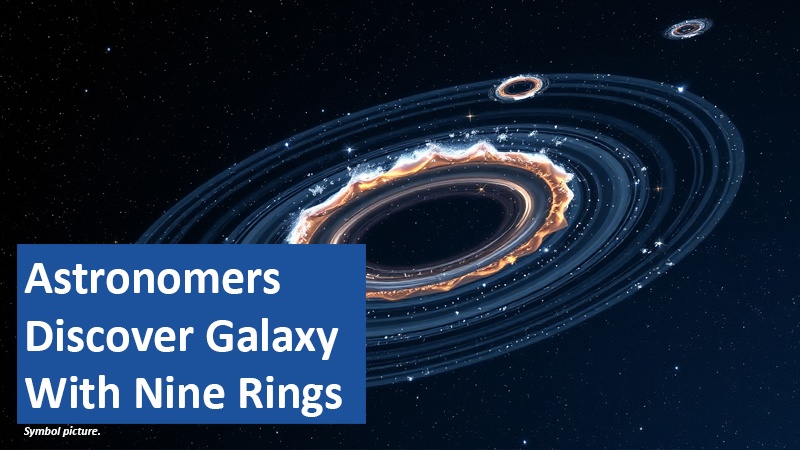
A newly discovered galaxy is challenging what scientists thought they knew about galactic collisions. Located 567 million light-years away, LEDA 1313424 is the first known galaxy to feature nine concentric rings of stars and gas. This unique formation appears to have resulted from a rare head-on collision with a smaller galaxy, creating wave-like ripples that spread outward like a stone dropped into water. The discovery provides a valuable opportunity to test existing theories about galaxy formation and evolution.
Exclusive Amazon discounts – shop now!
A Cosmic Collision Unlike Any Other
Galactic collisions are common in the universe, often leading to mergers or dramatic bursts of star formation. However, when a small galaxy crashes directly through the center of a larger one, it can generate concentric rings that ripple outward. This phenomenon has been theorized for years, but until now, scientists had only observed galaxies with a maximum of three rings. The discovery of LEDA 1313424, with its nine distinct rings, represents a breakthrough in understanding these interactions.
Perfect Timing for a Rare Observation
Using data from the Hubble Space Telescope and the Keck Observatory in Hawaii, researchers identified LEDA 1313424’s remarkable structure. The galaxy’s rings remain intact because the collision likely occurred only 56 million years ago—relatively recent in cosmic terms. Over time, these rings will gradually dissipate, making this discovery a fleeting yet crucial moment for astronomers to study. The observed ring patterns also match theoretical predictions, confirming long-standing models about how such structures form.
The Culprit: A Disrupted Dwarf Galaxy
Scientists have identified a small blue dwarf galaxy about 130,000 light-years from LEDA 1313424 as the likely cause of the collision. This dwarf galaxy shows signs of intense star formation and structural damage, typical of a galaxy that has undergone a recent violent encounter. A thin stream of gas connects the two galaxies, further supporting the idea that they were once intertwined. The impact also increased levels of neutral hydrogen gas within LEDA 1313424, potentially fueling future star formation.
Could Ring Galaxies Become Giant Diffuse Systems?
The discovery raises new questions about the long-term fate of ring galaxies. Researchers suggest that galaxies like LEDA 1313424 could evolve into Giant Low Surface Brightness Galaxies (GLSBs)—large, faint, and diffuse systems with little star formation. If this hypothesis is correct, LEDA 1313424 offers a rare glimpse into an evolutionary process that could transform galaxies over billions of years.
The unprecedented find of a nine-ring galaxy challenges existing models of galactic evolution.
What other hidden structures might be waiting to be discovered in the vastness of space? Share your thoughts in the comments!
Based on content from www.scinexx.de and additional research.